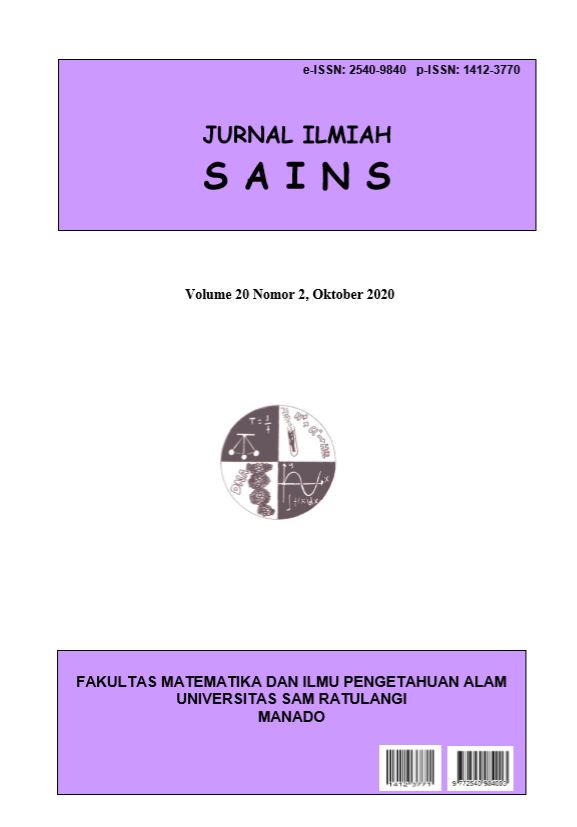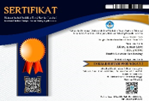Mobile Learning (M-Learning) Based Learning Application Design for Elementary School Students
DOI:
https://doi.org/10.35799/jis.20.2.2020.27877Abstract
This study was designed to produce a learning design based on Mobile Learning (M-Learning) that is appropriate for elementary school students. In making this instructional media design, the Multimedia Development Life Cycle (MDLC) method consists of six stages: concept, design, obtaining material, assembly, testing, and distribution, but in this study only carried out two stages, concept and design. The results showed that the MDLC method privides the feasibility percentage of: media experts amounted to 89.44%; material experts amounted to 92,89%, and teachers amounted to 93.3%. Â This study produces a learning design based on Mobile Learning (M-Learning) that is feasible to be applied for elementary school students.
Keywords: Learning media; mobile learning; multimedia development life cycle
Â
Desain Aplikasi Pembelajaran Berbasis Mobile Learning (M-Learning) Untuk Siswa Sekolah Dasar
ABSTRAKPenelitian ini bertujuan untuk menghasilkan desain media pembelajaran berbasis Mobile Learning (M-Learning) yang layak untuk siswa sekolah dasar. Dalam membuat desain media pembelajaran ini digunakan metode Multimedia Development Life Cycle (MDLC) yang terdiri dari enam tahapan yaitu concept, design, obtaining content material, assembly, testing, dan distribution, namun pada penelitian ini hanya dilakukan dua tahapan saja yaitu tahap concept dan tahap design. Hasil penelitian menunjukkan bahwa metode MDLC memberikan hasil persetase kelayakan dari: ahli media sebesar 89,44%; ahli materi sebesar 92,89%; dan guru-guru sebesar 93,3%. Â Penelitian ini menghasilkan sebuah desain media pembelajaran berbasis Mobile Learning (M-Learning) yang layak diterapkan pada siswa sekolah dasar.
Kata Kunci: Media pembelajaran; mobile learning; multimedia development life cycle
References
Donnell, A. O., & A.O. Donnell. 2014. Using M-learning as a Means to Promote Self- direction and Engagement in Apprenticeship Theoretical Lessons apprenticeship theoretical lessons. Irish Journal of Academic Practice, 3(1): 10–30. https://doi.org/10.21427/D75B06.
Guritno, & R. Sudaryono. 2011. Theory and Application of IT RESEARCH: Metodologi Penelitian Teknologi Informasi. Andi Offset, Yogyakarta.
Lund, A. M. 2001. Measuring usability with the USE questionnaire. Usability Interface, 8(2):3–6. DOI:10.1177/ 1078087402250360.
Munir. 2013. Multimedia, Konsep Aplikasi Multimedia. Alfabeta, Bandung.
Pressman, R. S. 2001. Software Engineering A Practitioner’s Approach, 5th Edition. McGraw-Hill Companies, New York.
Rosa, A.S., & M. Shalahuddin. 2015. Rekayasa Perangkat Lunak Terstruktur dan Berorientasi Objek. Informatika, Bandung.
Sonego, A.H.S., L.R. MacHado, C.A.W. Torrezzan & P.A. Behar. 2016. Mobile learning: Pedagogical strategies for using applications in the classroom. Proceedings of the 12th International Conference on Mobile Learning 2016: 28–34.
Sugiyono. 2015. Metode Penelitian dan Pengembangan Research and Development. Alfabeta, Bandung.
Yogiyatno, W., & H. Sofyan. 2013. Pengembangan multimedia interaktif kompetensi dasar mengoperasikan software basis data untuk SMK Negeri 1 Seyegan. Jurnal Pendidikan Vokasi, 3(3):391–404. DOI:10.21831/jpv. v3i3.1851.
Yuniati, L. 2012. Pengembangan Media Pembelajaran Mobile Learning Efek Doppler Sebagai Alat Bantu Dalam Pembelajaran Fisika Yang Menyenangkan. Jurnal Penelitian Pembelajaran Fisika, 2(2):92–101. DOI:10.26877/jp2f.v2i2/septembe.130.
Yusuf, M. O. (2005). Information and communication technology and education: Analysing the Nigerian national policy for information technology. International Education Journal, 6(3): 316–321.







